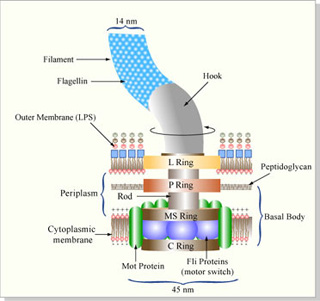Course Description
This course covers introductory microbiology from a systems perspective, considering microbial diversity, population dynamics, and genomics. Emphasis is placed on the delicate balance between microbes and humans, and the changes that result in the emergence of infectious diseases and antimicrobial resistance. The case …
This course covers introductory microbiology from a systems perspective, considering microbial diversity, population dynamics, and genomics. Emphasis is placed on the delicate balance between microbes and humans, and the changes that result in the emergence of infectious diseases and antimicrobial resistance. The case study approach covers such topics as vaccines, toxins, biodefense, and infections including Legionnaire’s disease, tuberculosis, Helicobacter pylori, and plague.
Course Info
Learning Resource Types
grading
Exams
notes
Lecture Notes
assignment_turned_in
Problem Sets with Solutions

This natural rotary motor propels the flagella of E. coli cells, allowing them to move forward. (Figure by MIT OpenCourseWare.)










